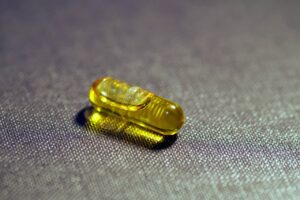Vitamin D is essential for optimal health. It is essential for bone health, immune system function and inflammation reduction. Many people suffer from vitamin deficiency worldwide, which can lead to a variety of health problems. This article highlights 10 foods that are rich in vitamin D and nine symptoms of deficiency.
Vitamin D Deficiency Symptoms
- Bone pain and weakness: Vitamin D helps calcium to be absorbed in the bones. Deficit can cause osteomalacia (softening of the bones) in adults, and rickets (softening of the bones) in children. This can cause muscle weakness and bone pain, especially in the legs, lower back and hips.
- Frequent Illnesses and Infections: Vitamin D is essential for boosting the immune system. Deficit can increase the risk of infections such as colds or flu. Vitamin D is known to help fight pathogens, and support the immune system.
- Fatigue: Even after a full night of sleep, persistent fatigue and tiredness can be caused by low vitamin D levels. Vitamin D deficiency has been shown to impair the mitochondrial function in cells, which is essential for energy production.
- Depression and mood swings: Vitamin D affects the production of serotonin – a neurotransmitter which affects mood. Low vitamin D levels have been linked to depression, especially seasonal affective disorder (SAD) which occurs in the darker months.
- Slow Healing: Vitamin D plays a role in the formation of compounds which are essential for the formation of new skin during the healing process. A deficiency can lead to a slow healing of wounds, and an increased risk of infection after surgery or injury.
- Hair loss: Severe baldness can be an indication of vitamin D deficiency. This is especially true for alopecia areata, a condition characterized by severe loss of hair. Vitamin D stimulates hair follicles and a deficiency in this vitamin can interfere with the process.
- Muscle pain: The receptors for vitamin D are found in the nerve cells that sense pain, called nociceptors. A lack of vitamin D can lead to musculoskeletal problems, particularly in the legs and lower back. According to some studies, vitamin D supplements may help relieve chronic pain.
- Bone loss: In addition to bone pain, vitamin-D deficiency may lead to osteoporosis, a reduction in bone density. It increases the risk for fractures in older adults. Vitamin D is essential for bone mineral density.
- Impaired Healing: Vitamin D is important in controlling inflammation and fighting infection. A deficiency can affect these functions and delay the healing of wounds. It is responsible for the production of skin-forming proteins.
Foods High in Vitamin D
- Fat Fish: Fatty Fish is a good source of vitamin D.
- Cod Liver Oil: Cod liver oil is a concentrated source of vitamin d. One teaspoon contains 450 IU. This makes it a great supplement for people who do not get enough vitamin d from the sun or their diet.
- Yolks: The yolks of eggs are a good source of vitamin d. Choose eggs from chickens that have been raised outside or on vitamin-enriched feed to get higher levels.
- Fortified Foods: Milk, orange juice and cereals are all fortified with Vitamin D. A cup of fortified dairy products contains 100 IUs of vitamin D. This helps to fill the gap in those who do not get enough from their natural sources.
- Beef Liver: Beef liver is a nutrient dense food that’s rich in vitamin A and iron.
- Cheddar: Some types of cheese such as cheddar are good sources for vitamin D. Although the amount of vitamin is small, it can add to your overall intake if you consume it regularly.
- Mushrooms: Certain mushrooms, particularly those that are exposed to ultraviolet light (UV), are high in vitamin D2. As an example, UV-exposed Maitake mushrooms provide up to 1000 IU in a 3.5 ounce serving. Although regular mushrooms are less nutritious, they can still be consumed.
- Fortified Milks: Fortified plant-based milks are a great option for vegans and lactose intolerant people.
- Caviar: Caviar is a high-quality fish roe that contains a surprising amount of vitamin D.
- Yogurt: Certain yogurts contain vitamin D.
Maximizing Vitamin D Intake
- Sun Exposure: Vitamin D is produced by the body when skin is exposed. You should aim for 10-30 minutes at midday, several times per week. This will depend on your skin type and where you live. To prevent skin damage and overexposure, use sunscreen.
- Supplements: Vitamin D supplementation can be a good way to ensure that you are getting enough, especially if you’re at risk for a deficiency. Vitamin D3 is preferred for supplementation because it raises blood levels more effectively than vitamin D2(ergocalciferol).
- Regular Blood Testing: Regular tests of blood can monitor vitamin D levels in individuals who are at risk for deficiency. This includes older adults, people with darker skin and those living in northern latitudes.
Conclusion
Vitamin D is a crucial nutrient which plays an important role in many bodily functions. A lack of vitamin D can cause a variety of health problems, from depression to muscle weakness and bone pain. Vitamin D-rich food, sun exposure, and supplements, if needed, can be added to your diet in order to maintain adequate levels. To prevent deficiency, regular testing and monitoring is essential.


